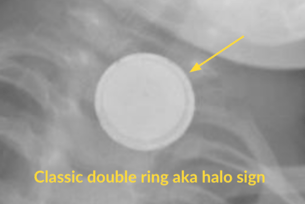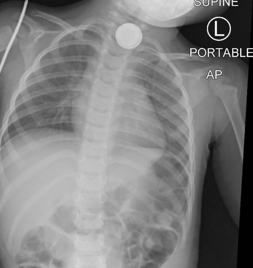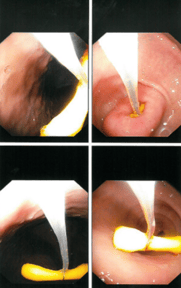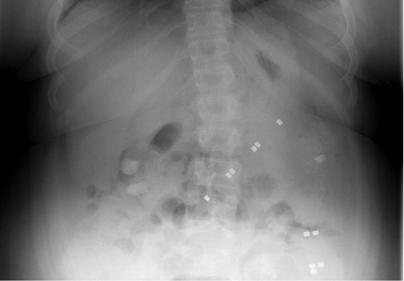Toys for Kids: Keep them Safe

As December is Safe Toys and Gifts Awareness Month, now is the perfect time to emphasize the importance of toy safety to parents and caregivers.
Toys bring joy and learning opportunities to children, but they can also pose serious health risks. According to the United States Consumer Product Safety Commission’s (CPSC) report on Toy Related Deaths and Injuries in 2022, there were 11 deaths in children under age 14 related to toys.
There were also 209,500 emergency department visits due to toy injuries in those under age 14, with 38% of those injured being young children under age 4. Many toys can cause minor scrapes or cuts and according to the U.S. CPSC report, 41% of the ER visits due to toy injury were for lacerations or bruising in 2022.
Let’s further discuss key aspects of toy safety to be aware of, including choking hazards and ingestion of button batteries or magnets. The more we know, the more we can educate and remind caregivers to help keep all children safe during this season of gift giving.
The Hazard of Choking
Choking hazards are everywhere. Those especially vulnerable to choking are toddlers who curiously put all sorts of things into their mouths. Small toy parts, balloons, and toys with detachable components can become lodged in a child's airway, posing a life-threatening risk.
Four of the 11 toy deaths in 2022 were due to choking on small balls; one was due to choking on a balloon. It is very important to give age-appropriate toys to children. However, in families with multiple children, choking hazards can get in the hands and mouths of young ones from a toy meant for an older sibling.
A good rule of thumb is that if the toy or toy part can fit into a toilet paper roll, it can choke a child under the age of 3 and should be kept out of their reach. Balloons either deflated or popped/broken also pose a choking hazard and should be kept away from children under age 8.
All year round, but especially during this holiday season of gift giving, caregivers should be advised to check all toys for age-appropriateness; this can be discussed at visits as you make small talk about the holidays. Caregivers should check for small parts which may dislodge and watch children (especially toddlers) at all times while playing.
Clinical Pearl: Have a few toilet paper tubes available in the clinic to help educate families on choking risks.
The Hazard of Button Cell/ Coin Battery Ingestion
Button cell/coin batteries are commonly used in battery-operated toys and electronic devices. When swallowed, they can cause severe, immediate, and deadly consequences. They can burn through a child’s esophagus in as little as two hours.
There is a federal toy standard that requires these batteries in toys to have a secure closure only openable with a tool, but many remotes or electronics with button cell or coin batteries do not have secure compartments.
In 2022, Reese's Law was passed and the CPSC enacted new regulations for securing, packaging, and labeling of this type of battery. This law now requires “either the use of a tool such as a screwdriver or coin to open the battery compartment, or the application of at least two independent and simultaneous movements to open by hand.” This is a wonderful step in regulation to help protect our children.
Educating parents on the signs of button cell/coin battery ingestion and the need for immediate medical care is crucial. The National Capital Poison Center has released a Button Battery Ingestion Triage and Treatment Guideline helping clinicians to quickly know how to treat patients with suspected ingestion.
Caregivers should be educated to give children ≥12 months old two teaspoons of honey every 10 minutes while en route to the Emergency Room. Also, these children should never be forced to vomit. Other than honey, they should be kept NPO. These batteries on plain film have the characteristic halo sign or double ring appearance. Removal protocol is based on age and size of the battery ingested. For all patients <12 years old with a battery radiographically seen in the esophagus, removal needs to occur immediately.


The phone numbers for the National Battery Ingestion Hotline (800-498-8666) and Poison Control (800-222-1222) should be readily available in all households, not just those with children. The Hotline can help with battery identification; however nothing, including battery identification, should delay transport to the ER.
It is recommended to spend five minutes or less attempting to determine the code on the battery from a replacement or companion battery. The first letter on the imprinted code represents the type of battery; the second letter– which is an R on these batteries– indicates its cylindrical shape; and the numbers indicate the battery’s dimensions.
If the battery has a 4 digit code, the first two numbers indicate the battery’s diameter (or just the first number in a 3 digit code) and the last two numbers indicate the battery’s height (measured in tenths of a millimeter). For example a CR2032 is a manganese-dixoide/lithium cylindrical battery which is 20 mm in diameter and 3.2 mm in height.
Button battery ingestion is very serious - and when choosing toys for their children, caregivers may decide to simply avoid any and all toys using this type of battery.
Clinical Pearl: Include the National Button Battery Hotline along with the Poison Control number on clinic magnets or appointment reminder cards so these numbers can be readily available to families at home.
The Hazard of Magnet Ingestion
Small, powerful magnets found in certain toys can be particularly hazardous. When swallowed, multiple magnets can attract each other through the intestinal walls, causing severe damage. When discussing toy safety with caregivers, clinicians should advise caution about toys with strong magnets.
In October 2022, a new safety standard was released by the U.S. CPSC to help protect children from the danger of high-powered magnets. The magnets of most concern are considered “heavy earth magnets”. Magnets in many novelty desk toys are now required by the new safety standard to be too large to be swallowed or to contain weaker magnetic fields, so the risk of internal injuries is reduced. Many magnetic toys are enclosed in plastic such as in the popular magnetic tile building sets. Caregivers should routinely check these toys to ensure there are no cracks in the seams or that a child or pet hasn’t chewed through the casing, exposing a magnet. Many magnetic toys have been recalled by the CPSC.


This article outlines a clear and concise algorithm on the treatment of magnet ingestion. The most crucial factor in medical decision making is the duration of magnet ingestion. Observation and serial radiographic studies are based on normal small bowel transit time and should not exceed 6 hours.
Clinical Pearl: Remind caregivers to frequently inspect magnetic toys for cracks in the plastic casing that may have exposed magnets; this is extra important in homes with pets who may chew through the plastic.
Conclusion
Toy safety is a paramount concern for medical providers. Byy sharing this vital information with parents and caregivers, we can contribute to preventing toy-related injuries and deaths.
One final tip: it’s also important to not only think of what toys are purchased, but also from where. The U.S. CPSC and the U.S. Customs and Border Patrol confiscated more than 1.1 million illegal or dangerous toys in 2023; over 100,000 of these toys contained lead. Buying from in-person and reputable online retailers will help ensure the toys purchased meet appropriate safety standards. Choking hazards, button battery ingestion, and magnet ingestion are potential dangers that require our attention and guidance as clinicians. The CPSC website lists all toy recalls; all caregivers should be aware of this list to ensure they’re informed. By following the recommended precautions and seeking medical attention promptly, we can help keep our young patients safe and healthy during this holiday season.
Want to make sure you’re not putting your child in harm’s way by buying the wrong toys? The American Academy of Pediatrics has published these Top Ten Tips for identifying safe toys.
Practice-Changing Education
Experience education that goes beyond theory. Explore Hippo Education’s offerings below.